Samuel Paul,
Kala Seetharam Sridhar, A Venugopala Reddy and Pavan Srinath
2012 Oxford
University Press, New Delhi
pp.297. Price Rs.765
There is a fairly widespread recognition that
we are moving towards a rapid process of urbanization. Issues of development
and poverty that was once focused in the rural areas is now finding increasing
importance in the urban context and setting. The need to make informed
decisions and customize interventions to the areas where such interventions are
needed depends heavily on the quality of data. One of the aspects that we
constantly lament about is the non-availability of meaningful data either for
research or for policy making.
In this context this is a very important book.
It is important because it recognizes the gap that an academic always
encounters, it tries to fill in the gap and offers a template of a database
that could be built up over a period of time across all the habitations – not
necessarily cities. It will be particularly useful in not only preparing master
plans for the habitations, but it will help the local administration to prepare
and plan for civic amenities.
The book opens by making a case for itself and
also detailing the methodology of collection of data. The book covers data on
15 cities of Karnataka, a chapter dedicated to a city. The overall template
covers the history, demographics, economic dimensions, infrastructure and other
services, quality of life and the budgets. All these are interesting pieces of
data. Indeed as the authors present the data, they also bring to the fore the
difficulty in obtaining granular city based data. It is somewhat surprising
that given that the national databases are built on the basis of primary
granular data we find it so much more difficult to get disaggregated data.
Take for instance the availability of credit
and banking data. While the book has been able to present the data with the
co-operation of the Reserve Bank of India [RBI], one should have had a natural
access to such data bases. With the level of technology being used, it should
not be difficult for agencies like RBI to put the entire database [subject to
the confidentiality aspects] in a manner that could be downloaded and accessed
as per the requirements of the seeker of data.
As we work with databases and use these
databases to draw policy inferences, we also discover that there is disconnect
between the agency that collects the data and the users of the data. For
instance, let us discuss the observation made by the authors:
“Given India’s service revolution, we examined if at all there is any
single sector which dominates the services category in all the cities. Talking
all the 15 cities into account, we found that a little more than a fifth of
workers were in wholesale and/or retail trade and an additional one-fifth in
“other” services such as public administration and defence, compulsory social
security, education, health and social work, other community, social and
personal service activities, private households with employed persons, and
extra territorial organizations and bodies. Unfortunately we neither have data
on information technology [IT] or IT enabled services in the cities not enough
data to examine if employment in traditional services [such as work in hotels,
restaurants, or trade and commerce] were high in smaller cities.” [p.16]
This quote from the book opens up a classic
question on the methodology of data collection by government. Do we do our
collection on the pre-specified silos and populate them, or collect raw data
and later classify them into some silos? If it is the latter, then the database
should be able to turn in the data that the researchers want. The above quote
is also an indication of how badly the statistics of the country lag the trend
shown by the primary sector. Given that IT and ITES are expected to be one of
the significant employers in the services sector, the data classification not
capturing the detail is something we should ponder over.
The book does not touch upon the government
inter-departmental co-ordination specifically, but we may have to discuss this
issue in the context of the book. In most of these, there is little
co-ordination between departments. For instance, the Ministry of Labour has classified
all the occupations in the country using a four level hierarchy and aligning it
with International Standard Classification of Occupations. This classification
is called the National Classification of Occupations. Wonder how many of our
surveys done by other government departments use this classification in mapping
the occupational patterns. If the government does not use this classification,
the probability of someone else using this classification is remote. If we were
to make data comparable across time and across sectors and locations then these
protocols need to be followed. While bringing out the data on cities, the book
points out not only to the gaps, but also the direction in which data could be
organized.
The angst about the data continues elsewhere
in the book as they are looking at comparing city data sets:
 “Despite the JNNURM and numerous urban poverty programmes, basic
information on the urban poor is sorely lacking. No data exists on a city-wide
basis on the magnitude and the problems of the urban poor, their households,
and the services delivered to them. How programmes can be designed and
delivered in the cities without such basic knowledge is difficult to fathom.
There are wide variations among the 15 cities on most of the parameters on
which this study has gathered official data. The inter-city disparities in
resource distribution and utilization are most striking. The fact that
different departments of the state government are in charge of different
services and programmes could be one reason”.
“Despite the JNNURM and numerous urban poverty programmes, basic
information on the urban poor is sorely lacking. No data exists on a city-wide
basis on the magnitude and the problems of the urban poor, their households,
and the services delivered to them. How programmes can be designed and
delivered in the cities without such basic knowledge is difficult to fathom.
There are wide variations among the 15 cities on most of the parameters on
which this study has gathered official data. The inter-city disparities in
resource distribution and utilization are most striking. The fact that
different departments of the state government are in charge of different
services and programmes could be one reason”.
This could be a nightmare not only for the
policy maker, but a lesser mortal like an academic. Where would you start a
quest if basic information is not available? How would one draw up a population
and a sampling plan? And what level of triangulation could we do between the
primary data and the database to understand representativeness? In this sense
the book really throws open the inadequacy of information and the need for
organized data.
Even when we take the broad parameters on
which the book presents data there are further questions that crop up. It is
okay to look at data at a city level, but how a city is broken up by the
various departments is not uniform. The way the Bangalore Water Supply and
Sewerage Board divides up a city like Bangalore is different from how the wards
are cut up under the Brihat Bengaluru Mahanagara Palike; this is different from
how the postal department has organized pincodes; Bangalore Metropolitan
Transport Corporations organization of divisions is unique and the Bangalore
Electricity Supply Company’s organization of divisions would also be uniquely
different. Each one of these data providers would have a different definition
of the borders of Bangalore. Therefore any researcher or policy maker working
in the field of urban issues is bound to face significant problems in secondary
data and how it is organized. The authors also highlight the other problems
with data. Look at this quote for instance:
“As far as hospitals are concerned, we found that Bangalore [The city]
has 13 hospitals [including government hospitals, private hospitals, and
nursing homes] per lakh population [or a total of 1,027 hospitals]. However,
what matters is number of beds in the hospitals rather than the number of
hospitals themselves. Unfortunately, our data on the number of hospital beds
cover only government hospitals since we did not have data on beds in all
hospitals.”
So, while the book works as a resource book
and an aggregation point of organized data on 15 cities of Karnataka, it also
implicitly raises many more questions about the quality and quantity of data
that is available in the public domain. Therefore what is unsaid in the book is
as important [if not more] as what the books brings to the table.
This is certainly not a book to be read. It is
a book to be referred to. In that sense, the book is a bit of a let down due to
one factor. It has been published late for the 2001 census data where it ends
and a bit too early before the 2011 census data could be obtained. If only the
authors had added the 2011 data it would have been even more useful for
somebody who wanted to analyse this neat data over time. Clearly if one indeed
tries to “read” the book, then the problem encountered would be that of a
monotony. Unless one was doing a specific research on a particular city, the
format looks repetitive – and seems to say the same thing about each city. A
little bit of work would have made the text more readable. While there is a
comprehensive chapter that looks at data across cities, it would have been good
when specific data of a particular city was being discussed a counter point, a
comparison, a reinforcement of that using data from other comparable cities
could have been slipped in. It would have made the book a little more readable.
 Irrespective of other expectations, this is no
doubt an important book, but only as a starting point. The quality of data and
the quality of analysis from now on should only improve – both in terms of
coverage of cities and in terms of the depth of the data provided, and also in
terms of the granularity of the data.
Irrespective of other expectations, this is no
doubt an important book, but only as a starting point. The quality of data and
the quality of analysis from now on should only improve – both in terms of
coverage of cities and in terms of the depth of the data provided, and also in
terms of the granularity of the data.
Prof. Paul and his team need to be
complemented for this painstaking and frustrating work that they have
undertaken








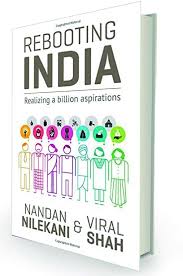








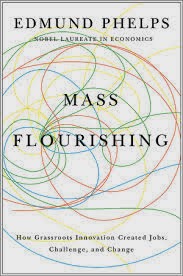









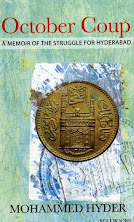

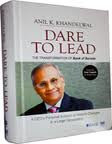


























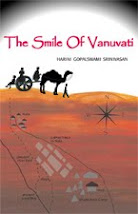


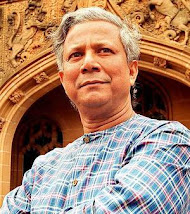
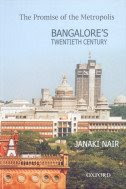







![Hyderabad: A Book [or two] and A Movie](http://3.bp.blogspot.com/_mxWA9ZVkKhQ/S0vnLAO90CI/AAAAAAAABYM/WgbSbAcAaEk/S214/luther1.0.jpg)

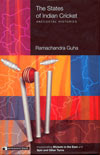





![Two Lives [and this is not about Vikram Seth]](http://1.bp.blogspot.com/_mxWA9ZVkKhQ/S0vjkyDYRvI/AAAAAAAABXM/mJGK-_gZiNg/S214/mansur.jpg)





No comments:
Post a Comment